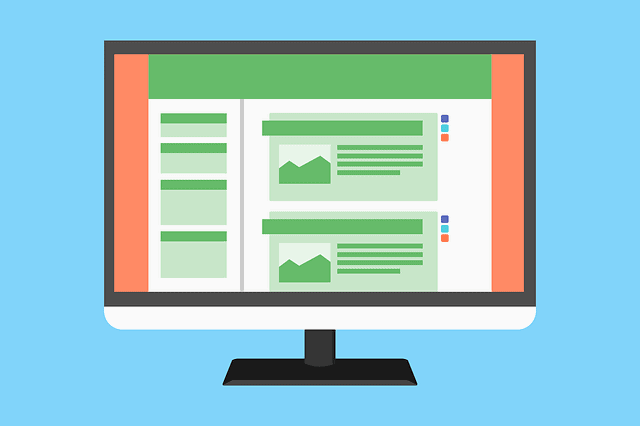Last Updated on January 15, 2024 by Ellen
How many blogs is too many? How many blog posts should each have to be successful? Find out more about creating a blogging schedule.
Posts may be sponsored. This post contains affiliate links, which means I will make a commission at no extra cost to you should you click through and make a purchase. As an Amazon Associate I earn from qualifying purchases.
How Many Blogs is Too Many?
If you have more than one blog, you might be wondering about what type of publishing schedule you need to maintain to get more organic traffic.
You want to provide quality content to your readers without becoming overwhelmed. There are several factors that go into answering this question. Let’s explore them further.
Purpose of Your Blogs
Before deciding on the number of blogs to create, you should determine the purpose of each blog. Are they both for personal use? Do you have one blog that is focused on a specific niche and another that covers a variety of topics? Knowing the answer to these questions will help in determining how many blogs you need.
Making money with your blog content
If you are publishing blogs without a method of making money from them, stop. Getting more traffic without a plan for earning money doesn’t make sense.
If you don’t want to run ads on your blog, explore email marketing or affiliate income. Take a look at Google analytics and find out what blog topics are popular.
Work to get those on the first page and determine how to monetize your blog content.
Benefits of Having Multiple Blogs
Having multiple blogs can offer a range of advantages. Firstly, it allows for a more targeted approach in terms of content. One blog can be dedicated to a specific niche, making it easier to attract and engage a more focused audience.
Secondly, if you have a broad range of interests or business verticals, having several blogs allows you to cover unique topics on each without diluting the core messaging of the others.
Lastly, multiple blogs can help enhance your digital presence, as more content can increase visibility and improve SEO rankings.
However, it is essential to maintain a consistent posting schedule across all blogs to reap these benefits effectively.
Challenges of Maintaining Multiple Blogs
While there are significant advantages to running multiple blogs, it is equally crucial to recognize the potential challenges. The most prominent hurdle is the requirement of time and effort.
Each blog requires consistent content generation, and managing several simultaneously can be demanding. It can also be challenging to continually generate fresh, engaging content for multiple platforms, risking the quality of the posts due to divided attention.
Additionally, each blog demands its unique marketing strategy, which further increases the complexity. It can be tough to foster and maintain separate online communities for each blog, which is integral for growing an engaging and loyal reader base.
Finally, managing the technical aspects of multiple blogs – including website maintenance, SEO optimization, and troubleshooting issues – can be a time-consuming endeavor. Therefore, before embarking on the journey of maintaining multiple blogs, it is essential to weigh the benefits against these potential challenges.
Strategies for Managing Multiple Blogs
Managing multiple blogs can be a daunting task, but with the right strategies, it can be made less stressful and more efficient. Here are a few strategies to help you manage multiple blogs effectively.
1. Content Planning and Scheduling
Creating a content calendar for each blog will help you stay organized and keep track of what content needs to be published and when. It also allows for better planning of topics around relevant events or trends.
2. Time Management
Allocate specific time slots dedicated to each blog. This can include writing, editing, interacting with readers, and performing maintenance tasks. Having a structured timetable can prevent tasks from overlapping and ensure each blog gets the attention it needs.
3. Hiring or Outsourcing
If the workload becomes too heavy, consider hiring contributors or outsourcing some tasks such as SEO optimization or technical maintenance. This can free up your time to focus on content creation and engagement. Fiverr is a great place to start.
4. Use of Automation Tools
Automation tools can significantly reduce the time spent on repetitive tasks. Tools for scheduling posts, sharing content on social media, or analyzing blog performance can be a great help in managing multiple blogs.
5. Cross-Promotion
Leverage the audience of each blog by cross-promoting content. This can take the form of guest posts, shared newsletters, or occasional references to the content of one blog on another.
By implementing these strategies, it’s possible to effectively manage multiple blogs without compromising on content quality or reader engagement.
Impact of Blog Post Frequency on Organic Traffic
The frequency of posts can significantly influence organic traffic. A higher posting frequency can lead to an increase in traffic as fresh content tends to attract both new and returning visitors. Search engines such as Google favor websites that regularly update their content, rewarding them with better visibility in search results. This can drive more organic traffic to your blog.
However, it’s crucial to find the right balance. Posting too frequently can lead to burnout and a drop in content quality. Lower quality posts may not hold the interest of your audience, leading to a decrease in traffic over time. Furthermore, if your posts are too frequent, your audience might struggle to keep up, potentially leading to engagement fatigue.
Conversely, if your blog posts are infrequent, you risk losing visibility in search engine rankings, leading to reduced organic traffic. Consistency is key – determine a feasible schedule that allows for the regular posting of valuable, high-quality content. This will not only boost SEO but will also keep your readers engaged and coming back for more, thereby steadily increasing organic traffic over time.
Importance of Niche Selection
Choosing the right niche is crucial for several reasons. Firstly, a well-defined niche can set your site apart from the vast amount of generalist content available online. By focusing on a specific topic, you demonstrate your expertise and offer unique value to your readers.
Secondly, a clear niche makes it easier to target a specific demographic, facilitating more effective content development and marketing strategies. You can craft content that resonates with your audience and channels your marketing efforts towards platforms where your target demographic is likely to engage.
Thirdly, a niche blog can enhance SEO performance. By using keywords relevant to your niche, you can improve your blog’s visibility on search engine results pages, attracting more organic traffic.
Lastly, niche blogging can be more profitable. Advertisers in your niche are often willing to pay a premium to reach a highly targeted audience, leading to increased revenue from ads and sponsored posts.
However, niche selection should be balanced with passion and knowledge about the topic. Writing consistently about a subject requires a deep interest and understanding of it. Therefore, when choosing a niche, consider your interests, expertise, and the potential audience demand.
This product presentation was made with AAWP plugin.
Determining Optimal Blog Posting Frequency
Identifying the ideal blog posting frequency depends on several factors such as your target audience, the nature of the content, and your personal capacity. Here are a few steps to help you determine the best posting frequency for your blog.
1. Understand Your Audience
Gather insights about your audience’s reading habits. Are they frequent visitors who prefer daily updates, or do they favor in-depth, less frequent posts? Utilize analytics to understand when your audience is most active and receptive.
2. Evaluate Your Content
The type of content you produce can influence posting frequency. If your blog provides news updates or trending topics, more frequent posts may be required. Conversely, if your content is evergreen, in-depth, and comprehensive, you can space out your posts.
3. Assess Your Resources
Consider your available time and resources. High-frequency posting could lead to burnout or compromise on quality if you do not have sufficient resources. Remember, it’s better to maintain a consistent schedule of high-quality posts than to post frequently with inferior content. Create a realistic posting schedule.
4. Experiment and Analyze
Experiment with different posting frequencies and analyze the impact on traffic and engagement. Use analytics tools to track metrics like page views, comments, shares, and the overall time spent by visitors on your website.
By understanding your audience, evaluating your content, assessing your resources, and experimenting with different strategies, you can find a blog posting schedule that works best for you and your audience. Remember, the goal is not just to attract traffic, but to engage your readers and keep them coming back for more.
This product presentation was made with AAWP plugin.
How Many Posts Do You Need to Be Successful?
Achieving success in blogging does not necessarily translate into churning out countless blog posts. Rather than focusing solely on quantity, it’s essential to consider the quality and relevance of your content. That being said, a common question often asked is, “how many posts do you need to be successful?”. The answer, however, is not a one-size-fits-all.
For a new site, it is often recommended to have at least 10 to 15 high-quality posts at launch. This gives your target audience enough material to engage with, and demonstrates your commitment and expertise in your chosen niche. One blog post is not enough.
After the initial launch, a consistent posting schedule is key – whether that’s once a week, twice a month, or even less frequently. The key is consistency. Regularly providing your audience with fresh, valuable content not only keeps your readers engaged but also signals to search engines like Google that your site is active, which can enhance your SEO ranking.
Blogging frequency
However, it’s vital to ensure that the frequency of your posts doesn’t compromise the quality of your content. It’s far more beneficial in the long run to publish one truly valuable, well-researched post per week than several mediocre ones.
Ultimately, the number of blog posts needed to achieve success largely depends on the goals and strategy of your blog. By understanding your audience, consistently delivering high-quality content, and regularly analyzing your performance, you can establish a successful blogging presence regardless of the total count of your posts.
This product presentation was made with AAWP plugin.
How many posts do you need per month?
Establishing the ideal number of blog posts per month is contingent upon several factors, including your blog’s objectives, target audience’s preferences, and overall content strategy. It’s not necessarily about an exact number, but rather a balance of quality content and regular updates.
For some, two high-quality posts per month may suffice, while others might aim for weekly updates. The key is to develop a consistent posting schedule that aligns with your audience’s expectations, while ensuring the quality of your content is not compromised.
Always remember that quality should never be sacrificed for the sake of quantity. Hence, the ideal number of posts per month would largely depend on your unique blogging context and strategy.
Don’t get overwhelmed
If your blogging frequency is overwhelming, it’s time to stop. Don’t prioritize blogging success over your health.
You want to have quality organic traffic so pushing out low quality content is not the answer. For website traffic, you need to have better content than other websites. That doesn’t always mean more articles. You can improve existing articles or discover ways to generate leads.
There’s no limit to how many blogs you can have if you manage them properly. Outsource or automate to save time and sit back and watch the money build.

Ellen is a serial entrepreneur who owns 9 profitable blogs, two printable stores, an online vintage jewelry business, and a variety of other work at home endeavors. She shares tips for working at home successfully.









